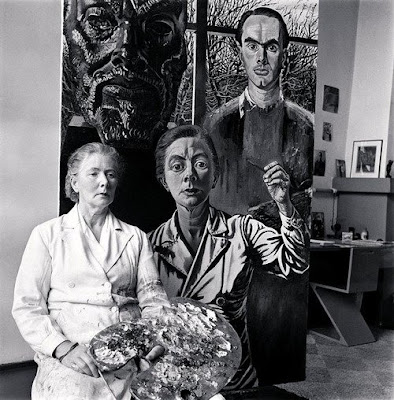 |
| Berthe Morisot "Self-Portrait" 1885 Musée Marmottan Monet |
Morisot was one of three painting sisters, all raised in a comfortable and cultured french family who were unusually supportive of the young women's artistic ambitions. I have written about Berthe's close relationship with her sister Edma, but the oldest sister Yves, also displayed unusual talent for art, although she very early abandoned it as a serious pursuit. Yves' daughter Paule Gobillard (1867-1946) inherited both talent and ambition. She was often to be found working with Morisot in her home and studio. Indeed, when Yves Gobillard died in 1893 Paule and her younger sister Jeanne moved in for a time with their aunt Berthe and their cousin Julie Manet. Morisot's husband Eugène Manet had died the previous year and the doubly bereaved women drew together for mutual support and comfort.
 |
| Berthe Morisot "Paule Gobillard Drawing" 1886 Private Collection |
Interestingly, both these portraits of Gobillard are dated 1886. In the first Gobillard's hair is still down her back in a childlike braid, whereas by the next piece she was wearing it up, a sign of maturity. Hair up or down could be of social significance or simply illustrate a random moment, perhaps a morning when the girl had not had time to dress her hair properly in her eagerness to get to the drawing board!
Paule Gobillard never married, but remained close to her sister Jeanne and her cousin Julie Manet, and was involved in the family life of her relatives. She continued to paint throughout her life and exhibited regularly at the Salon, as well as at private galleries in France and abroad.











LadyDianaBridgeman.jpg)














+-+Vanessa+Bell+Painting+-+1915.jpg)


